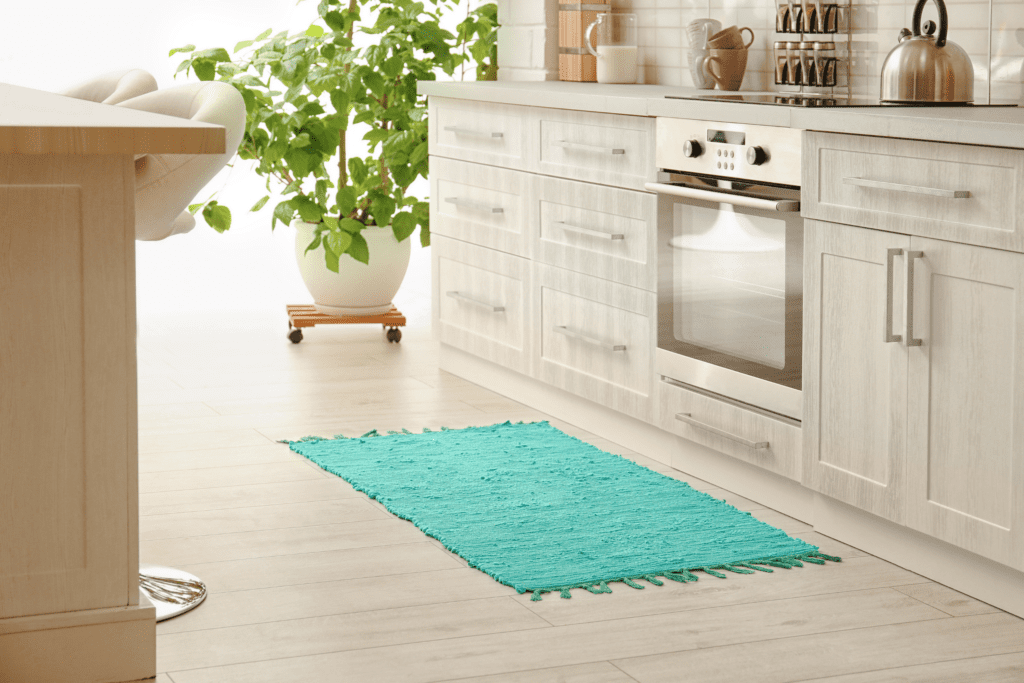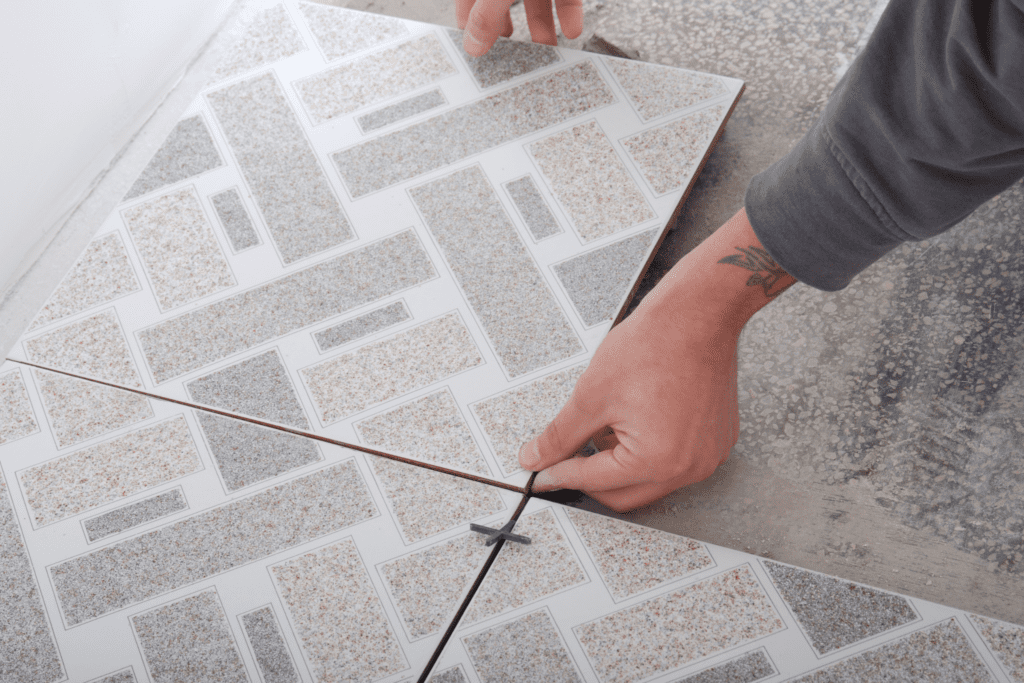Installing wood flooring over tile is a feasible project under the right circumstances, offering homeowners a way to refresh their space without the need for extensive demolition work. This approach can save time and reduce renovation costs, provided the existing tile floor is in good condition and properly prepared. For optimal results and to ensure the longevity of your new wood floor, considering a professional flooring installation is highly recommended. Here’s what you need to know about this process.
Key Considerations
When considering installing wood flooring over tile, there are several key considerations to ensure the success and longevity of your flooring project. Here’s a comprehensive list of these essential factors:
- Condition of Existing Tile: The tile should be well-adhered to the subfloor, without any loose tiles, cracks, or significant unevenness. Any damaged tiles must be repaired or replaced to ensure a stable foundation for the wood flooring.
- Height Transitions: Adding wood flooring on top of tile will raise the floor height, which could affect door openings, thresholds, and transitions to other types of flooring. It’s essential to account for these changes to ensure seamless integration.
- Type of Wood Flooring: Engineered wood is often preferred for installation over tile because it can handle slight variations in the floor level better than solid hardwood. Engineered wood’s construction provides stability and reduces the risk of warping or buckling.
- Visual Transition: Consider the visual transition between the wood flooring and any existing tile areas that will remain. Choose wood flooring that complements the style and color of the existing tile for a cohesive look.
- Underlayment: Using a suitable underlayment is crucial to address minor imperfections in the tile surface, provide additional moisture barrier protection, and reduce noise. The right underlayment can also make the wood flooring feel more comfortable underfoot.
- Adhesion Method: The installation method depends on the type of wood flooring. Floating floors are an excellent option because they don’t require adhesive to the tile below, making installation easier and avoiding damage to the existing tile. If you opt for solid hardwood or need to glue down engineered wood, ensure the adhesive is compatible with both the tile and wood.
- Moisture Considerations: Before installation, check for any moisture issues. Wood floors are sensitive to moisture, so it’s essential to ensure the tile isn’t harboring any dampness that could damage the wood over time.
- Wood Flooring Acclimation: Wood flooring needs to acclimate to the room’s environment where it will be installed. This process involves leaving the wood in the room for several days before installation to adjust to the room’s temperature and humidity levels, reducing the risk of expansion or contraction post-installation.
- Sound Transmission: Wood floors can produce more noise, such as footsteps, compared to carpet or tile. An underlayment designed to reduce sound transmission can be particularly important in multi-level homes or buildings to minimize noise.
- Thermal Insulation and Underfloor Heating: Wood floors may not insulate as well as carpet, potentially leading to a cooler floor surface. This aspect is crucial in colder climates or for those who value warm flooring underfoot.
- Compatibility with Underfloor Heating: If you have underfloor heating, ensure the wood flooring product is compatible. Not all wood floors are suitable for use with underfloor heating systems, as the heat can cause warping or drying.
Steps for Installation
Installing wood flooring over tile requires careful planning and attention to detail. Following these steps can help ensure a smooth and successful installation:
- Clean the Tile Floor: Ensure the tile surface is clean and free of debris.
- Level the Floor: Fill any grout lines or uneven areas with a leveling compound to create a flat surface.
- Install Underlayment: Roll out the underlayment according to the manufacturer’s instructions to provide cushioning and moisture protection.
4. Lay the Wood Flooring: Begin laying the wood flooring, following the chosen method (floating, gluing, or nailing, if applicable and appropriate).
5. Add Transition Strips: Install transition strips at doorways and thresholds to ensure a smooth transition between different flooring types.
6. Finishing Touches: Install baseboards or quarter-round molding to cover the expansion gap and provide a finished look.
Benefits of Installing Wood Flooring Over Tiles
Installing wood flooring over tiles offers several benefits, making it an attractive option for many homeowners and renovators. Here are some of the key advantages:
Cost-Effective Renovation:
By not removing the existing tile, you save on the costs and labor associated with demolition and disposal. This can make the renovation project more affordable and faster to complete.
Time-Saving:
The process of removing existing tile can be time-consuming, messy, and labor-intensive. Installing wood flooring directly over tile reduces the project timeline significantly.
Improved Aesthetics:
Wood flooring provides warmth and a natural beauty that can dramatically change the look and feel of a room. It offers a wide variety of styles, finishes, and colors to match any decor.
Enhanced Comfort and Warmth:
Compared to tile, wood floors are warmer underfoot and can contribute to a cozier and more comfortable living environment, especially in colder climates.
Sound Insulation:
Wood flooring can improve sound insulation in a room, reducing the echo and noise transmission that can occur with hard tile surfaces.
Potential Increase in Property Value:
High-quality wood flooring is often a desirable feature for homebuyers and can potentially increase the value of your property.
Versatility:
Wood flooring can be installed over a variety of tile materials, including ceramic, porcelain, and stone, provided the existing floor is stable and level.
Ease of Maintenance:
While tile floors have grout lines that can collect dirt and require regular cleaning, wood floors can be easier to maintain and keep clean, depending on the finish.
Health Benefits:
Wood floors do not harbor allergens, dust, or mold as carpets might, which makes them a healthier choice for indoor air quality, especially for those with allergies or respiratory issues.
Adaptability to Various Design Styles:
Wood floors can complement a wide range of interior designs, from traditional to contemporary, making them a versatile choice for any renovation project.
It’s important to weigh these benefits against the specific conditions of your installation, such as the type of wood flooring, the condition of the existing tile, and any moisture or height considerations.
Maximize Your Home's Potential with APRKC Expertise
While installing wood flooring over tile is an option, it requires careful consideration and preparation to ensure the durability and aesthetics of the finished floor. Consulting with a flooring professional before proceeding can provide valuable insights tailored to your specific situation and help you achieve the best possible outcome for your renovation project. At APRKC, we’re dedicated to ensuring your home transformation is both seamless and stunning. Let our expertise guide your next project to success, embodying our commitment to quality and your vision. Discover the Top flooring options in Overland Park to find the perfect match for your home, guided by our experienced professionals.



